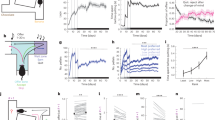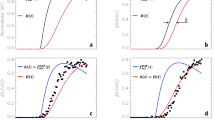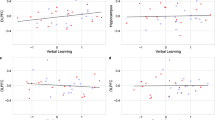Abstract
Successful decision making often requires weighing a given option’s costs against its associated benefits, an ability that appears perturbed in virtually every severe mental illness. Animal models of such cost/benefit decision making overwhelmingly implicate mesolimbic dopamine in our willingness to exert effort for a larger reward. Until recently, however, animal models have invariably manipulated the degree of physical effort, whereas human studies of effort have primarily relied on cognitive costs. Dopamine’s relationship to cognitive effort has not been directly examined, nor has the relationship between individuals’ willingness to expend mental versus physical effort. It is therefore unclear whether willingness to work hard in one domain corresponds to willingness in the other. Here we utilize a rat cognitive effort task (rCET), wherein animals can choose to allocate greater visuospatial attention for a greater reward, and a previously established physical effort-discounting task (EDT) to examine dopaminergic and noradrenergic contributions to effort. The dopamine antagonists eticlopride and SCH23390 each decreased willingness to exert physical effort on the EDT; these drugs had no effect on willingness to exert mental effort for the rCET. Preference for the high effort option correlated across the two tasks, although this effect was transient. These results suggest that dopamine is only minimally involved in cost/benefit decision making with cognitive effort costs. The constructs of mental and physical effort may therefore comprise overlapping, but distinct, circuitry, and therapeutic interventions that prove efficacious in one effort domain may not be beneficial in another.
Similar content being viewed by others
Log in or create a free account to read this content
Gain free access to this article, as well as selected content from this journal and more on nature.com
or
References
Arnold HM, Fadel J, Sarter M, Bruno JP (2001). Amphetamine-stimulated cortical acetylcholine release: role of the basal forebrain. Brain Res 894: 74–87.
Bardgett ME, Depenbrock M, Downs N, Points M, Green L (2009). Dopamine modulates effort-based decision making in rats. Behav Neurosci 123: 242–251.
Caceda R, Nemeroff CB, Harvey PD (2014). Toward an understanding of decision making in severe mental illness. J Neuropsychiatry Clin Neurosci 26: 196–213.
Cardinal RN, Aitken MRF (2006) ANOVA for the Behavioural Sciences Researcher. L Erlbaum: Mahwah, NJ. xvi 448 pp.
Claassen DO, van den Wildenberg WP, Ridderinkhof KR, Jessup CK, Harrison MB, Wooten GF et al (2011). The risky business of dopamine agonists in Parkinson disease and impulse control disorders. Behav Neurosci 125: 492–500.
Cocker PJ, Hosking JG, Benoit J, Winstanley CA (2012). Sensitivity to cognitive effort mediates psychostimulant effects on a novel rodent cost/benefit decision-making task. Neuropsychopharmacology 37: 1825–1837.
Cousins MS, Atherton A, Turner L, Salamone JD (1996). Nucleus accumbens dopamine depletions alter relative response allocation in a T-maze cost/benefit task. Behav Brain Res 74: 189–197.
Dalley JW, McGaughy J, O'Connell MT, Cardinal RN, Levita L, Robbins TW (2001). Distinct changes in cortical acetylcholine and noradrenaline efflux during contingent and noncontingent performance of a visual attentional task. J Neurosci 21: 4908–4914.
Day JC, Tham CS, Fibiger HC (1994). Dopamine depletion attenuates amphetamine-induced increases of cortical acetylcholine release. Eur J Pharmacol 263: 285–292.
Denk F, Walton ME, Jennings KA, Sharp T, Rushworth MF, Bannerman DM (2005). Differential involvement of serotonin and dopamine systems in cost-benefit decisions about delay or effort. Psychopharmacology (Berl) 179: 587–596.
Fibiger W, Singer G, Miller AJ (1984). Relationships between catecholamines in urine and physical and mental effort. Int J Psychophysiol 1: 325–333.
Floresco SB, Tse MT, Ghods-Sharifi S (2008). Dopaminergic and glutamatergic regulation of effort- and delay-based decision making. Neuropsychopharmacology 33: 1966–1979.
Freeze BS, Kravitz AV, Hammack N, Berke JD, Kreitzer AC (2013). Control of basal ganglia output by direct and indirect pathway projection neurons. J Neurosci 33: 18531–18539.
Ghods-Sharifi S, St Onge JR, Floresco SB (2009). Fundamental contribution by the basolateral amygdala to different forms of decision making. J Neurosci 29: 5251–5259.
Goschke T (2014). Dysfunctions of decision-making and cognitive control as transdiagnostic mechanisms of mental disorders: advances, gaps, and needs in current research. Int J Methods Psychiatr Res 23 (Suppl 1): 41–57.
Herrnstein RJ (1970). On the law of effect. J Exp Anal Behav 13: 243–266.
Hosking JG, Cocker PJ, Winstanley CA (2014). Dissociable contributions of anterior cingulate cortex and basolateral amygdala on a rodent cost/benefit decision-making task of cognitive effort. Neuropsychopharmacology 39: 1558–1567.
Kilpatrick MR, Rooney MB, Michael DJ, Wightman RM (2000). Extracellular dopamine dynamics in rat caudate-putamen during experimenter-delivered and intracranial self-stimulation. Neuroscience 96: 697–706.
Kool W, McGuire JT, Rosen ZB, Botvinick MM (2010). Decision making and the avoidance of cognitive demand. J Exp Psychol Gen 139: 665–682.
Kravitz AV, Tye LD, Kreitzer AC (2012). Distinct roles for direct and indirect pathway striatal neurons in reinforcement. Nat Neurosci 15: 816–818.
Lak A, Stauffer WR, Schultz W (2014). Dopamine prediction error responses integrate subjective value from different reward dimensions. Proc Natl Acad Sci USA 111: 2343–2348.
Malecek NJ, Poldrack RA (2013). Beyond dopamine: the noradrenergic system and mental effort. Behav Brain Sci 36: 698–699.
Mandel RJ, Leanza G, Nilsson OG, Rosengren E (1994). Amphetamine induces excess release of striatal acetylcholine in vivo that is independent of nigrostriatal dopamine. Brain Res 653: 57–65.
Morsella E, Feinberg GH, Cigarchi S, Newton JW, Williams LE (2011). Sources of avoidance motivation: valence effects from physical effort and mental rotation. Motiv Emot 35: 296–305.
Murray JE, Belin D, Everitt BJ (2012). Double dissociation of the dorsomedial and dorsolateral striatal control over the acquisition and performance of cocaine seeking. Neuropsychopharmacology 37: 2456–2466.
Naccache L, Dehaene S, Cohen L, Habert MO, Guichart-Gomez E, Galanaud D et al (2005). Effortless control: executive attention and conscious feeling of mental effort are dissociable. Neuropsychologia 43: 1318–1328.
Navarra R, Graf R, Huang Y, Logue S, Comery T, Hughes Z et al (2008). Effects of atomoxetine and methylphenidate on attention and impulsivity in the 5-choice serial reaction time test. Prog Neuropsychopharmacol Biol Psychiatry 32: 34–41.
Nunes EJ, Randall PA, Santerre JL, Given AB, Sager TN, Correa M et al (2010). Differential effects of selective adenosine antagonists on the effort-related impairments induced by dopamine D1 and D2 antagonism. Neuroscience 170: 268–280.
Passetti F, Dalley JW, O'Connell MT, Everitt BJ, Robbins TW (2000). Increased acetylcholine release in the rat medial prefrontal cortex during performance of a visual attentional task. Eur J Neurosci 12: 3051–3058.
Randall PA, Pardo M, Nunes EJ, Lopez Cruz L, Vemuri VK, Makriyannis A et al (2012). Dopaminergic modulation of effort-related choice behavior as assessed by a progressive ratio chow feeding choice task: pharmacological studies and the role of individual differences. PLoS One 7: e47934.
Rangel A, Camerer C, Montague PR (2008). A framework for studying the neurobiology of value-based decision making. Nat Rev Neurosci 9: 545–556.
Robbins TW (2002). The 5-choice serial reaction time task: behavioural pharmacology and functional neurochemistry. Psychopharmacology (Berl) 163: 362–380.
Robbins TW, Roberts AC (2007). Differential regulation of fronto-executive function by the monoamines and acetylcholine. Cereb Cortex 17 (Suppl 1): i151–i160.
Robertson SD, Matthies HJ, Galli A (2009). A closer look at amphetamine-induced reverse transport and trafficking of the dopamine and norepinephrine transporters. Mol Neurobiol 39: 73–80.
Robinson ES, Eagle DM, Mar AC, Bari A, Banerjee G, Jiang X et al (2008). Similar effects of the selective noradrenaline reuptake inhibitor atomoxetine on three distinct forms of impulsivity in the rat. Neuropsychopharmacology 33: 1028–1037.
Salamone JD (2009). Dopamine, effort, and decision making: theoretical comment on Bardgett et al. (2009). Behav Neurosci 123: 463–467.
Salamone JD, Correa M, Farrar AM, Nunes EJ, Pardo M (2009). Dopamine, behavioral economics, and effort. Front Behav Neurosci 3: 13.
Salamone JD, Cousins MS, Bucher S (1994). Anhedonia or anergia? Effects of haloperidol and nucleus accumbens dopamine depletion on instrumental response selection in a T-maze cost/benefit procedure. Behav Brain Res 65: 221–229.
Schmidt L, Lebreton M, Clery-Melin ML, Daunizeau J, Pessiglione M (2012). Neural mechanisms underlying motivation of mental versus physical effort. PLoS Biol 10: e1001266.
Schultz W, Dayan P, Montague PR (1997). A neural substrate of prediction and reward. Science 275: 1593–1599.
Schweimer J, Hauber W (2006). Dopamine D1 receptors in the anterior cingulate cortex regulate effort-based decision making. Learn Mem 13: 777–782.
Schweimer J, Saft S, Hauber W (2005). Involvement of catecholamine neurotransmission in the rat anterior cingulate in effort-related decision making. Behav Neurosci 119: 1687–1692.
Smit AS, Eling PA, Hopman MT, Coenen AM (2005). Mental and physical effort affect vigilance differently. Int J Psychophysiol 57: 211–217.
St Onge JR, Floresco SB (2009). Dopaminergic modulation of risk-based decision making. Neuropsychopharmacology 34: 681–697.
Sun H, Green TA, Theobald DE, Birnbaum SG, Graham DL, Zeeb FD et al (2010). Yohimbine increases impulsivity through activation of cAMP response element binding in the orbitofrontal cortex. Biol Psychiatry 67: 649–656.
Treadway MT, Buckholtz JW, Cowan RL, Woodward ND, Li R, Ansari MS et al (2012). Dopaminergic mechanisms of individual differences in human effort-based decision-making. J Neurosci 32: 6170–6176.
Treadway MT, Buckholtz JW, Schwartzman AN, Lambert WE, Zald DH (2009). Worth the ‘EEfRT’? The effort expenditure for rewards task as an objective measure of motivation and anhedonia. PLoS One 4: e6598.
Walton ME, Bannerman DM, Rushworth MFS (2002). The role of rat medial frontal cortex in effort-based decision making. J Neurosci 22: 10996–11003.
Wardle MC, Treadway MT, Mayo LM, Zald DH, de Wit H (2011). Amping up effort: effects of d-amphetamine on human effort-based decision-making. J Neurosci 31: 16597–16602.
Wickens JR, Reynolds JN, Hyland BI (2003). Neural mechanisms of reward-related motor learning. Curr Opin Neurobiol 13: 685–690.
Winstanley CA, Olausson P, Taylor JR, Jentsch JD (2010). Insight into the relationship between impulsivity and substance abuse from studies using animal models. Alcohol Clin Exp Res 34: 1306–1318.
Yu AJ, Dayan P (2005). Uncertainty, neuromodulation, and attention. Neuron 46: 681–692.
Zeeb FD, Floresco SB, Winstanley CA (2010). Contributions of the orbitofrontal cortex to impulsive choice: interactions with basal levels of impulsivity, dopamine signalling, and reward-related cues. Psychopharmacology (Berl) 211: 87–98.
Zeeb FD, Robbins TW, Winstanley CA (2009). Serotonergic and dopaminergic modulation of gambling behavior as assessed using a novel rat gambling task. Neuropsychopharmacology 34: 2329–2343.
Author information
Authors and Affiliations
Corresponding authors
Additional information
Supplementary Information accompanies the paper on the Neuropsychopharmacology website
Supplementary information
Rights and permissions
About this article
Cite this article
Hosking, J., Floresco, S. & Winstanley, C. Dopamine Antagonism Decreases Willingness to Expend Physical, But Not Cognitive, Effort: A Comparison of Two Rodent Cost/Benefit Decision-Making Tasks. Neuropsychopharmacol 40, 1005–1015 (2015). https://doi.org/10.1038/npp.2014.285
Received:
Revised:
Accepted:
Published:
Issue date:
DOI: https://doi.org/10.1038/npp.2014.285
This article is cited by
-
Insight into differing decision-making strategies that underlie cognitively effort-based decision making using computational modeling in rats
Psychopharmacology (2024)
-
Pharmacological characterization of sex differences in the effects of dopaminergic drugs on effort-based decision making in rats
Psychopharmacology (2024)
-
Short-active gestational photoperiod reduces effortful choice behavior in mice, partial normalization by d-amphetamine
Psychopharmacology (2023)
-
Delta-9-tetrahydrocannabinol reduces willingness to exert effort in women
Psychopharmacology (2022)
-
Heightened effort discounting is a common feature of both apathy and fatigue
Scientific Reports (2021)



